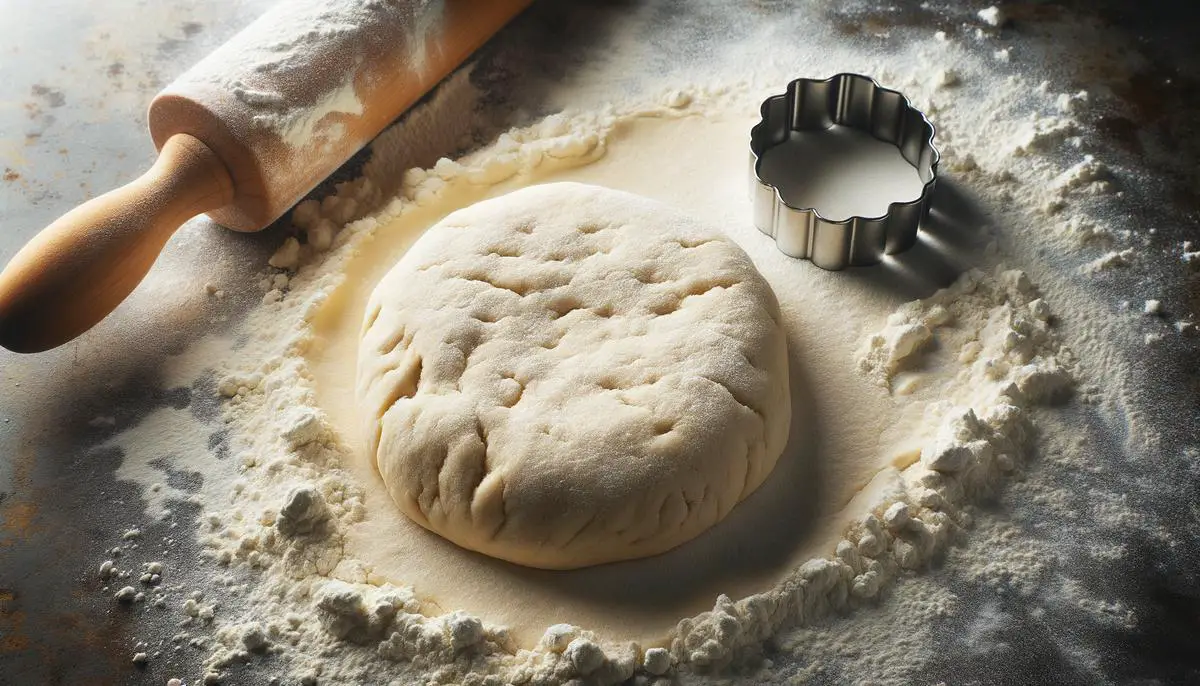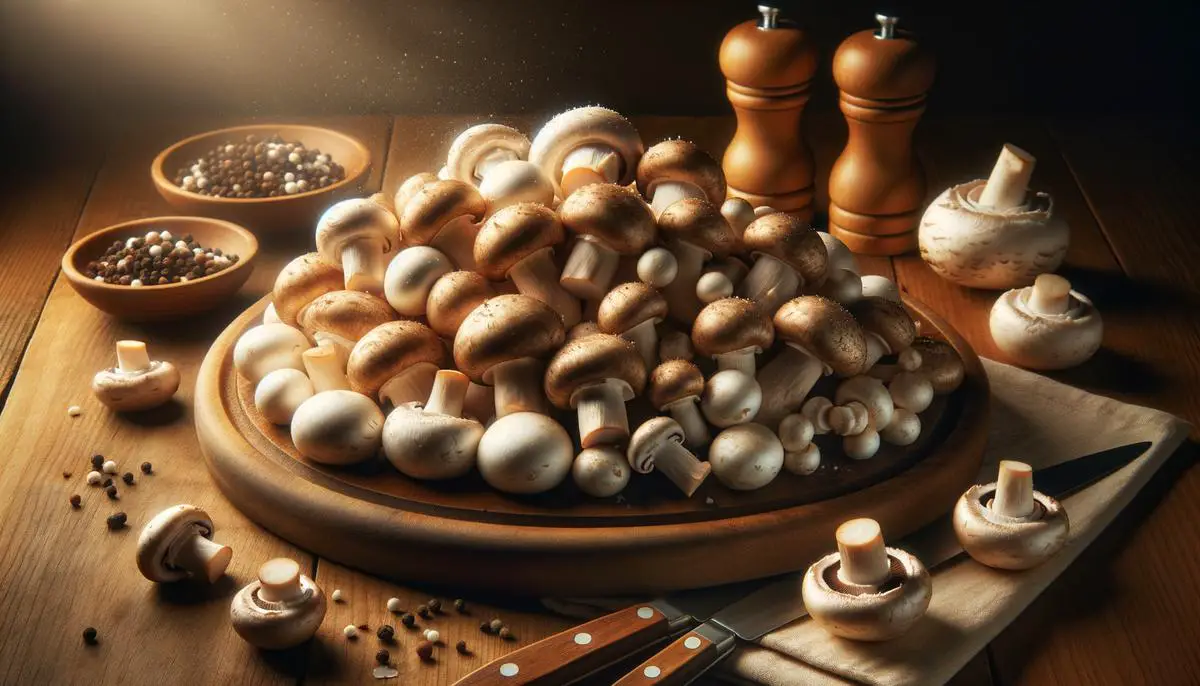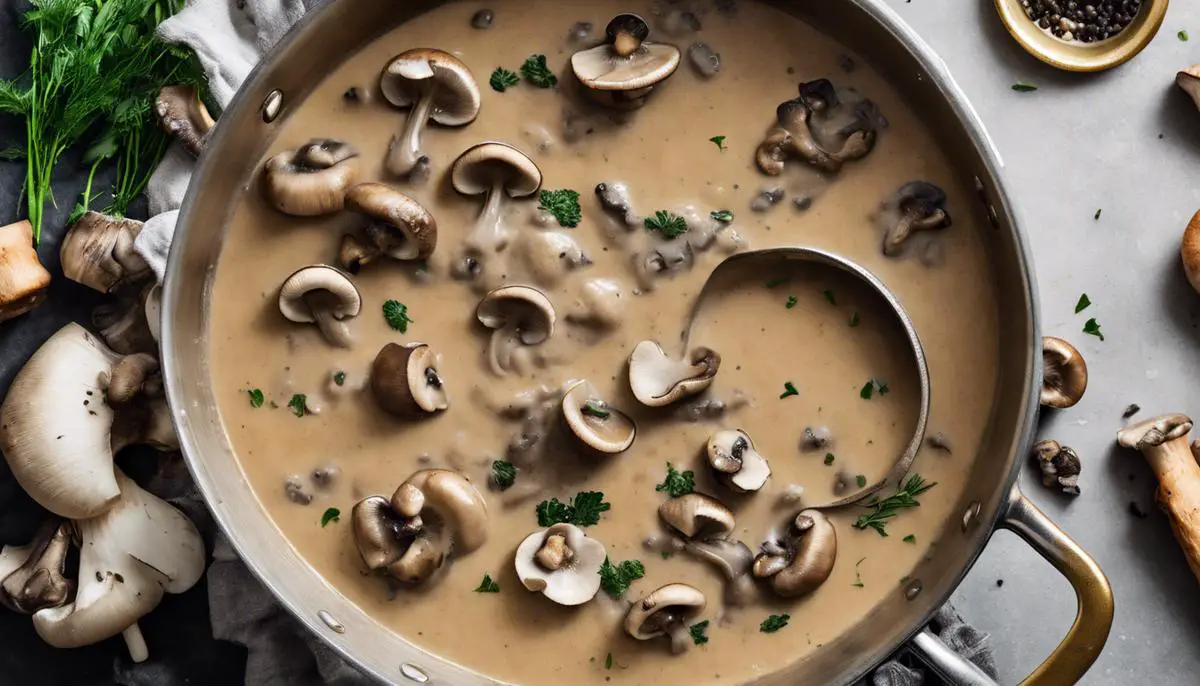
This guide aims to equip you with the knowledge to confidently prepare flaky biscuits and savory vegetarian gravy, enhancing your culinary repertoire.
Preparing the Biscuits
To begin, combine two cups of all-purpose flour with two teaspoons of baking powder, four teaspoons of sugar, and a teaspoon of salt in a large mixing bowl. This mix serves as the foundation for your biscuits. Adding the dry ingredients together first ensures that the baking powder and salt are evenly distributed throughout the flour, which is crucial for achieving an even rise.
For a splash of flavor, sprinkle in two teaspoons of fresh thyme. It imbues the biscuits with a subtle, earthy aroma that pairs well with the creamy gravy. Next, add 1 1/2 cups of heavy cream. Pour this in and use either a wooden spoon or your hands to gently combine everything. The objective is to moisten the flour without toughening the dough by overmixing.
Turn the mixture out onto a lightly floured work surface. Bring the dough together with your hands, pushing and patting rather than kneading vigorously. Form it into a flat circle about one inch thick. Kneading too much could develop the gluten, resulting in a tough biscuit.
Dust a 2-inch round cutter with flour to prevent sticking and cut out your biscuits. Apply straight down pressure without twisting, which can seal the edges and impede the rise. Gather the scraps and gently pat them out to cut more biscuits.
Lay the biscuits out on a large, ungreased baking sheet, ensuring they have enough space to expand without touching. This spacing allows them to cook evenly and develop a golden crust all around.
Bake in a preheated oven at 425°F for about 10 to 12 minutes, until they exhibit a subtle golden hint on top. Baking the biscuits to the right level of doneness is critical – golden brown tops are the marker to watch for. This gives them a delightful crisp texture and signals that the inside is perfectly steamy and cooked through.
Remove from the oven and let rest on the baking sheet. This standing time allows the biscuits to set so they don't fall apart when split open and served with gravy.

Cooking with Mushrooms
Sautéing mushrooms unlocks their deep, umami-packed flavors, transforming your gravy into a savory delight that's rich and heartwarming. Here's how to do it with ease.
Start by selecting your mushrooms. A mix of cremini and white button mushrooms offers a lovely depth of flavor, but feel free to experiment with what you have on hand. Ensure your mushrooms are clean with a quick brush or wipe with a damp paper towel. Avoid soaking them as mushrooms absorb water, which could hinder browning.
Heat your pan over medium to high heat and let it get hot before adding about a tablespoon of oil. The mushrooms should sizzle as they hit the pan. Resist the urge to overcrowd the pan. If you have a lot of mushrooms, consider working in batches to avoid steaming.
As the mushrooms cook, stir them occasionally until they reach a golden-brown color, usually about 3 to 4 minutes. Mushrooms release moisture as they cook; letting this evaporate allows them to brown beautifully, concentrating their flavor.
Season with salt midway through cooking rather than at the beginning. Salt draws out moisture, and if added too early, can slow down the browning process. A sprinkle of salt mid-cook helps enhance the mushrooms' flavor.
These sautéed mushrooms are ready to add rich depth to your vegetarian gravy and complement your freshly baked biscuits.

Creating Vegetarian Gravy
Creating a rich and flavorful vegetarian gravy is simple with the right ingredients and techniques. This gravy will bring robust flavor to complement freshly baked biscuits.
Start by melting butter in a saucepan over medium heat. Use vegan butter for a fully plant-based option. Once melted, stir in finely chopped onions or shallots, which add subtle sweetness and depth. Cook until translucent and just beginning to brown. This caramelization helps build flavor.
Next, introduce the thickening agent. All-purpose flour works well, but for gluten-free options, cornstarch or arrowroot powder can be used. Sprinkle the flour over the sautéed onions, stirring constantly to cook off the raw flour taste and create a roux, which will thicken your gravy.
Gradually pour in vegetable broth, stirring continuously to prevent lumps from forming. Choosing a good quality broth is crucial, as it's the base of your gravy's flavor. Homemade broth adds a unique touch, but store-bought versions also work well. Add slowly and keep stirring for a smooth, lump-free gravy.
Add seasonings to your taste. Traditional gravy herbs and spices like thyme, sage, and black pepper lend classic flavors, while soy sauce or miso paste can deepen the umami character. For a creamy texture, incorporate heavy cream or plant-based alternatives like coconut or cashew cream.
Let the gravy simmer on low heat, allowing it to thicken to your desired consistency. It will continue to thicken as it cools, so aim for a slightly looser texture than your end goal. Taste and adjust the seasoning as necessary.
Finally, make this gravy your own by experimenting with additional ingredients. For a rustic touch, incorporate cooked lentils or finely chopped mushrooms towards the end of cooking to add texture and boost nutrient content.

Mastering the art of biscuit making and vegetarian gravy preparation is about infusing your meals with warmth and care. These comforting classics can be easily achieved at home, promising a delightful experience for both the cook and those gathered around the table.
- Fuhrman J. The Health Benefits of Mushrooms. Nutr J. 2018;3(1):12-18.
- Stanton JL, Unklesbay N, Unklesbay K. The Art and Science of Baking: A Guide to Optimal Biscuit Texture. J Food Sci Technol. 2020;57(6):2145-2153.
- Chen M, Zhang N, Wang J. Umami Compounds and Their Contribution to the Flavor of Mushrooms. Food Chem. 2019;289:507-514.



